2 Alternatives for growth promotion, disease prevention and treatment
The antimicrobial alternatives discussed in this section are in alphabetical order. Some specific natural and alternative treatments, commonly used on O/A livestock farms will be provided as a handout at the end of this chapter.
Acupuncture
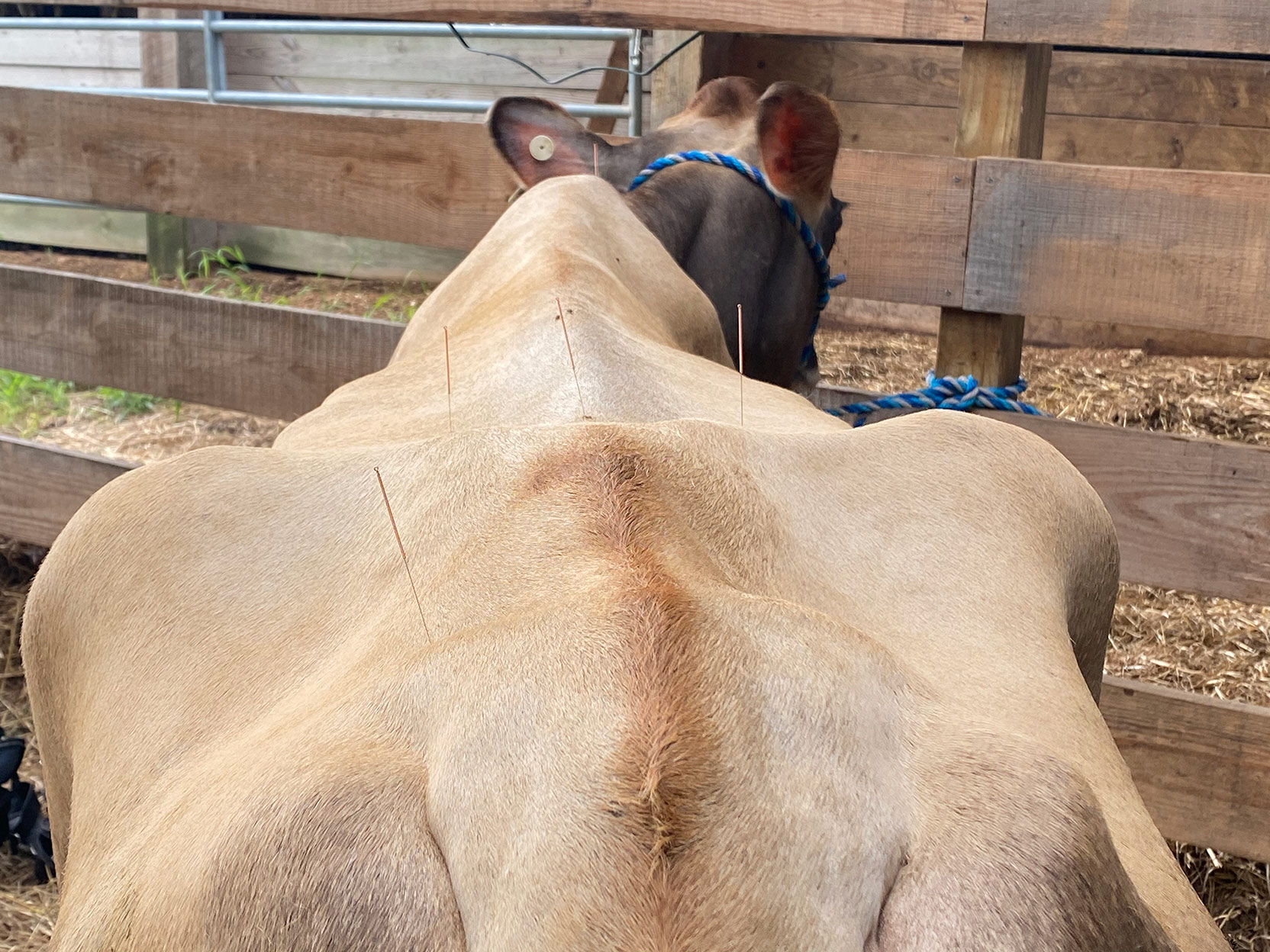
Acupuncture is an ancient medicine that encourages the body to heal itself. Fine, sterile needles are inserted through the skin and underlying tissues at specific locations called points. Acupuncture stimulates the body to release neurochemicals. Microtrauma occurs when the needle is placed into the tissue in a specific spot, stimulating a healing cascade through vessels and nerves. This activates cells that travel through the spinal cord, releasing healing factors and activating pain-blocking mechanisms. It also releases endorphins and hormonal chemicals.
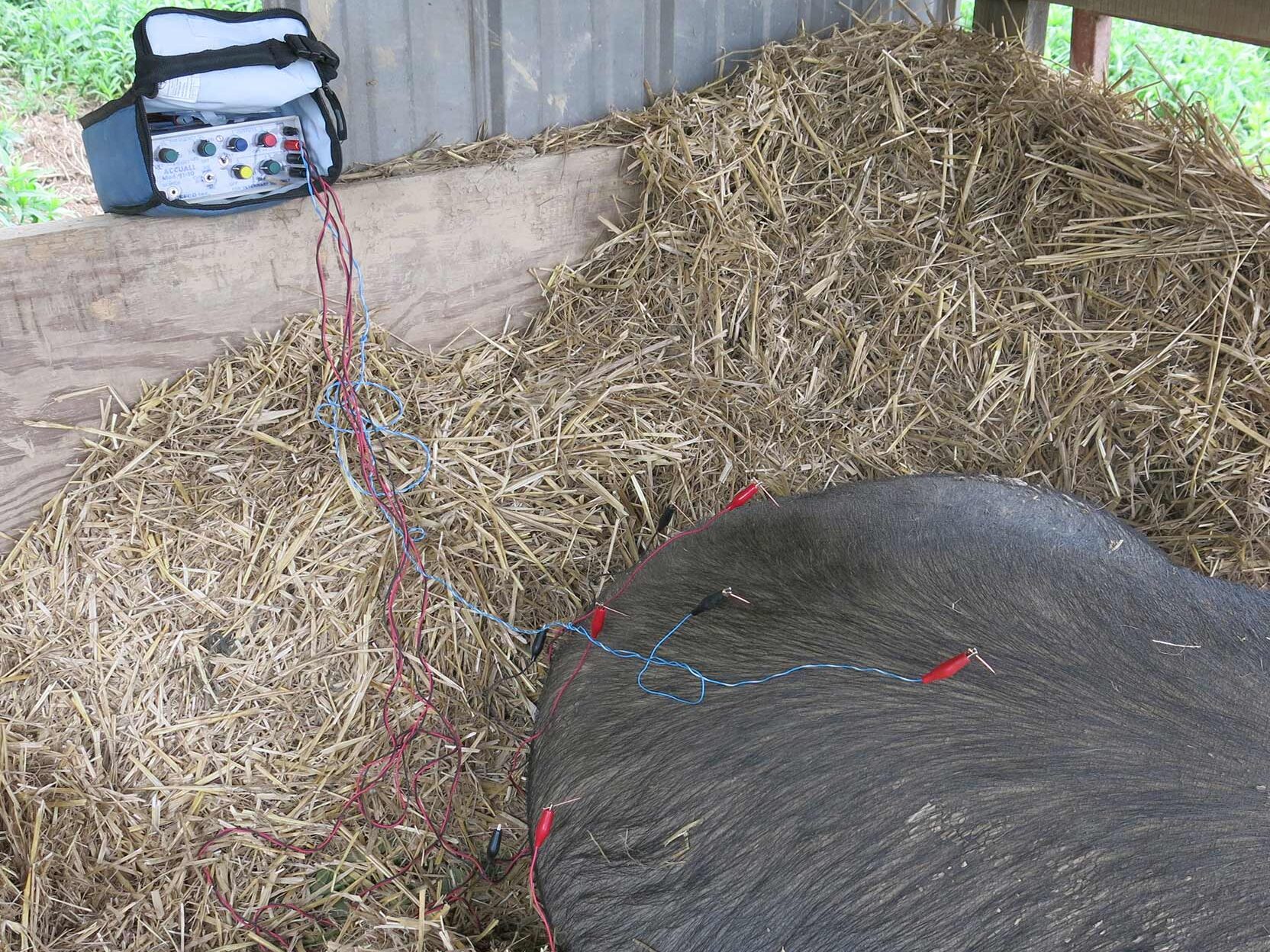
Acupuncture has been used in beef cattle for reproductive issues (poor libido, decreased sperm production), infertility, and prolapse. Injuries, lameness, and wound healing are also common treatments. Veterinary acupuncture can be a helpful tool for beef producers. Acupuncture often requires several visits to see an effect. Acupressure can also be used by applying digital pressure to an acupuncture point. Certification courses take months to complete; short day courses can introduce veterinarians and veterinary technicians to specific points and treatments to get them started (Shoen 2001). Acupuncture can also be used with electrical stimulation to the needles for increased effect with some conditions. See the photobiomodulation section for more information on laser acupuncture.
Antimicrobial peptides
These are short molecules with antibacterial properties that are toxic to certain bacteria. They act like prebiotics and probiotics by supporting beneficial bacteria. Studies in poultry, pigs, and cattle show potentially promising results. There may be ways to combine antimicrobial peptides with probiotics for a synergistic effect (Hancock & Sahl, 2006).
Bacteriophages, endolysins, and lysozymes
Several viruses produce enzymes that could be used as alternatives for antibiotics for disease prevention and potential treatment. Bacteriophages are viruses that infect and kill bacteria and are highly specific to the bacteria present. They have few unintended consequences but must be given during a narrow window when the bacterium is already present. So, accurate and early diagnostics are important. Bacteriophages are naturally occurring and common in the environment ( Labrie 2010). They have been used for disease prevention and treatment with good results, especially in poultry. Promising results have also been seen in piglets and calves, reducing the prevalence of diarrhea.
Endolysins and lysozymes
These hydrolases (i.e., enzymes) kill bacteria by breaking down their cell walls.
Hydrolases come from different sources, including bacteriophages, animals, plants, bacteria, and insects. They have shown promise with a broad range of gram-positive bacteria. Eukaryotic organisms and bacteria make Lysozymes and autolysins. They can be effective against viruses and other pathogens.
Botanicals (and their bioactive phytochemicals)
Botanicals are one of the oldest known medicines. Botanicals are the actual plant that can be ingested orally, used in a poultice, or brewed as tea. They can be prepared as tinctures, essential oils, glycerites, syrups, decoctions, and dried extracts. New uses of botanicals are being constantly developed for use (Padgham 2006). Below are some examples of botanicals used in veterinary medicine.
Aloe Products
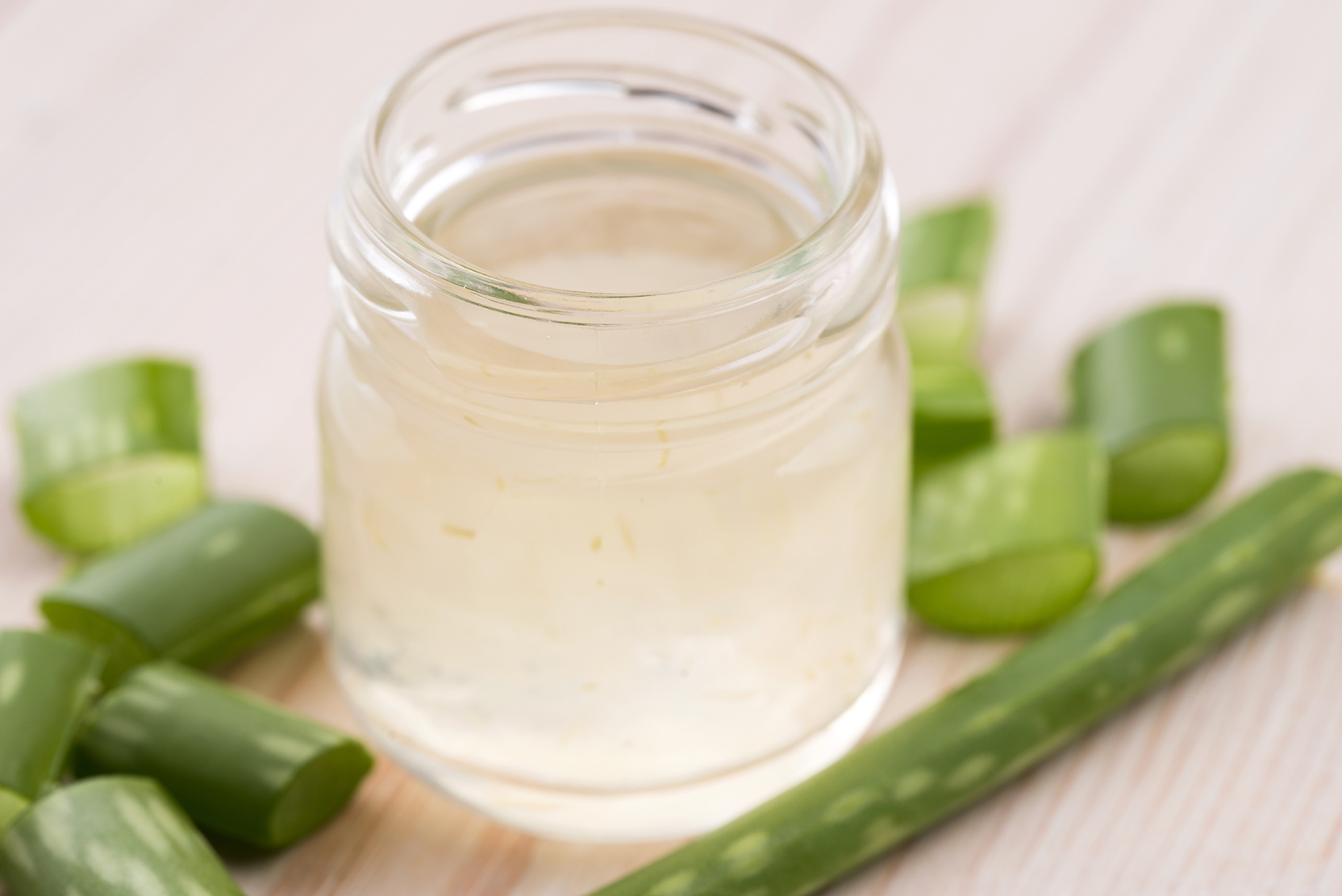 Aloe vera is the juice of a desert plant. Aloe vera has great healing effects on skin and epidural tissue. It can override the cortisol effect by stimulating increased immune function even when cortisol is present. Aloe vera comes in pellets for feeding, liquified for drenching, gel, liniment, and sprays for topical use. Safe and natural, this is one of the best bargains for organic dairy management. It must be certified organic, not diluted, and contain 4000 to 5000 mucopolysaccharides per liter (Padgham 2006).
Aloe vera is the juice of a desert plant. Aloe vera has great healing effects on skin and epidural tissue. It can override the cortisol effect by stimulating increased immune function even when cortisol is present. Aloe vera comes in pellets for feeding, liquified for drenching, gel, liniment, and sprays for topical use. Safe and natural, this is one of the best bargains for organic dairy management. It must be certified organic, not diluted, and contain 4000 to 5000 mucopolysaccharides per liter (Padgham 2006).
Tinctures
Tinctures are alcohol or glycerin-based extracts of plants or minerals. The alcohol of glycerin absorbs beneficial molecules with medicinal properties in a concentrated form. Garlic tincture is commonly used as an antibacterial. Goldenseal and Barberry (known better for its antibacterial effects with their berberines) and St. John’s Wort act as analgesics, comfrey heals bones, and arnica is used for bruising (Padgham 2006).
Essential oils
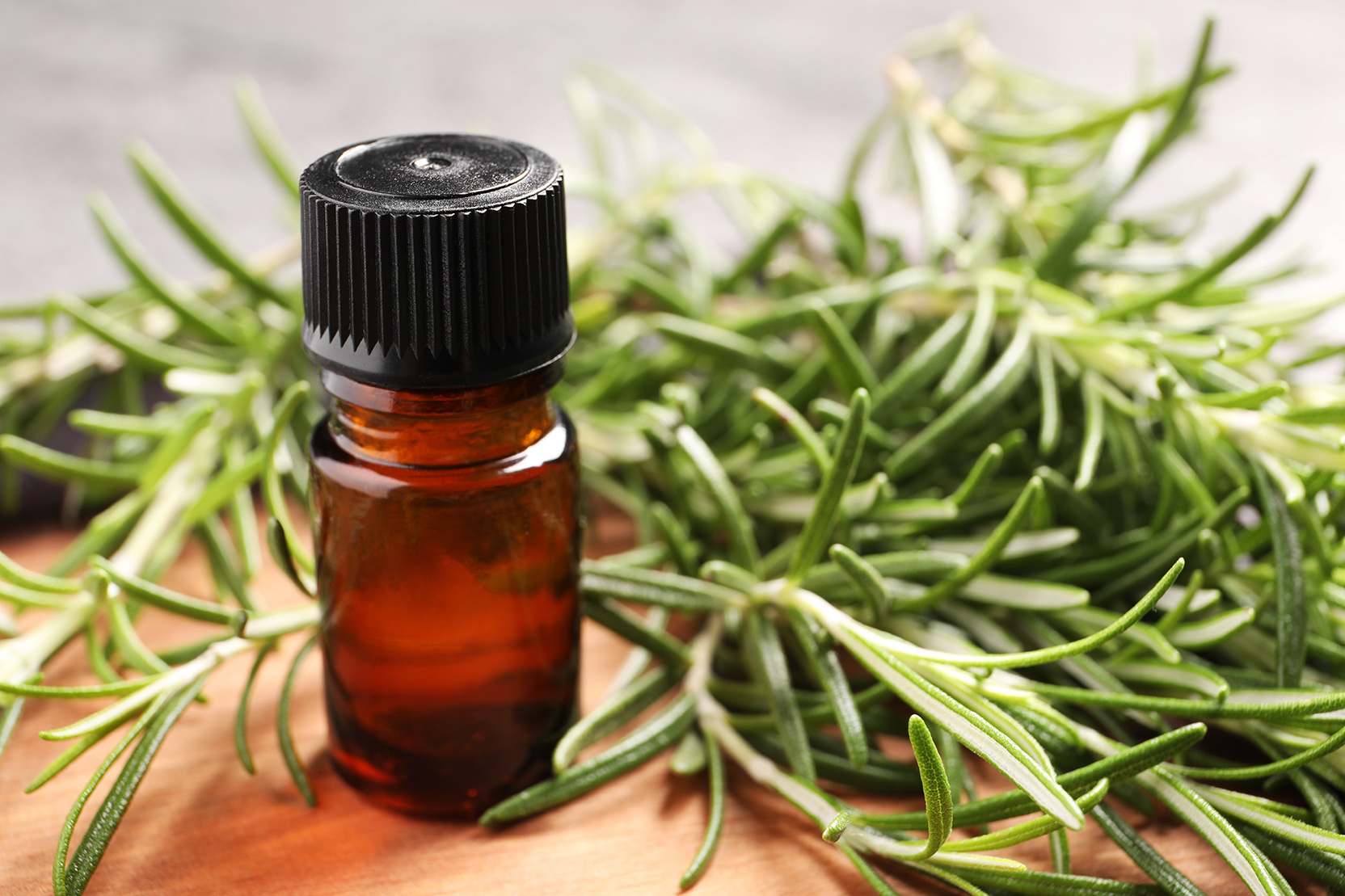 Plant-derived compounds include essential oils or tannins with antibacterial and growth-promoting effects. Since the Middle Ages, essential oils have been used for their antiseptic (i.e., bactericidal, virucidal, fungicidal, antiparasitic, insecticidal), medicinal, analgesic, sedative, anti-inflammatory, spasmolytic, and local anesthetic effects. They have also been used for embalmment and preservation of foods. Most essential oils are extracted by distillation from aromatic plants. The characteristics of essentials have not changed since then, but now more is known about some of their mechanisms of action. In nature, essential oils protect plants from bacteria, viruses, etc., and protect them from herbivores by making them less palatable. They also attract insects that help disperse pollen and seeds and repel others that might be undesirable. Different essential oils have different modes of action. Much remains unknown. They have been used on commercial poultry operations for growth promotion and prevention. Efficacy seems to depend on the part of the plant used. Some studies have shown the efficacy of phytochemicals in preventing diarrhea in cattle and improving digestive health, but more studies are needed (Pew 2017).
Plant-derived compounds include essential oils or tannins with antibacterial and growth-promoting effects. Since the Middle Ages, essential oils have been used for their antiseptic (i.e., bactericidal, virucidal, fungicidal, antiparasitic, insecticidal), medicinal, analgesic, sedative, anti-inflammatory, spasmolytic, and local anesthetic effects. They have also been used for embalmment and preservation of foods. Most essential oils are extracted by distillation from aromatic plants. The characteristics of essentials have not changed since then, but now more is known about some of their mechanisms of action. In nature, essential oils protect plants from bacteria, viruses, etc., and protect them from herbivores by making them less palatable. They also attract insects that help disperse pollen and seeds and repel others that might be undesirable. Different essential oils have different modes of action. Much remains unknown. They have been used on commercial poultry operations for growth promotion and prevention. Efficacy seems to depend on the part of the plant used. Some studies have shown the efficacy of phytochemicals in preventing diarrhea in cattle and improving digestive health, but more studies are needed (Pew 2017).
When combined, botanicals can have synergistic effects and are usually applied topically (Bakkali, Averbeck, et al. 2008). In animals, essential oils are often used as liniments for treating foot problems. (Padgham 2006) and fly spray. Some commonly used oils (with their indications) include Peppermint (anti-inflammatory, antibacterial, antifungal, and analgesic), Lavender (antiseptic, antifungal, anti-inflammatory, and analgesic), Geranium (antibacterial, anti-inflammatory, antifungal, and ideal for the skin), Pine (antiseptic and has cortisone-like properties. These oils can be used at full strength or applied topically in a very small amount mixed with any organic vegetable oil. Essential oils are complex mixtures of molecules.
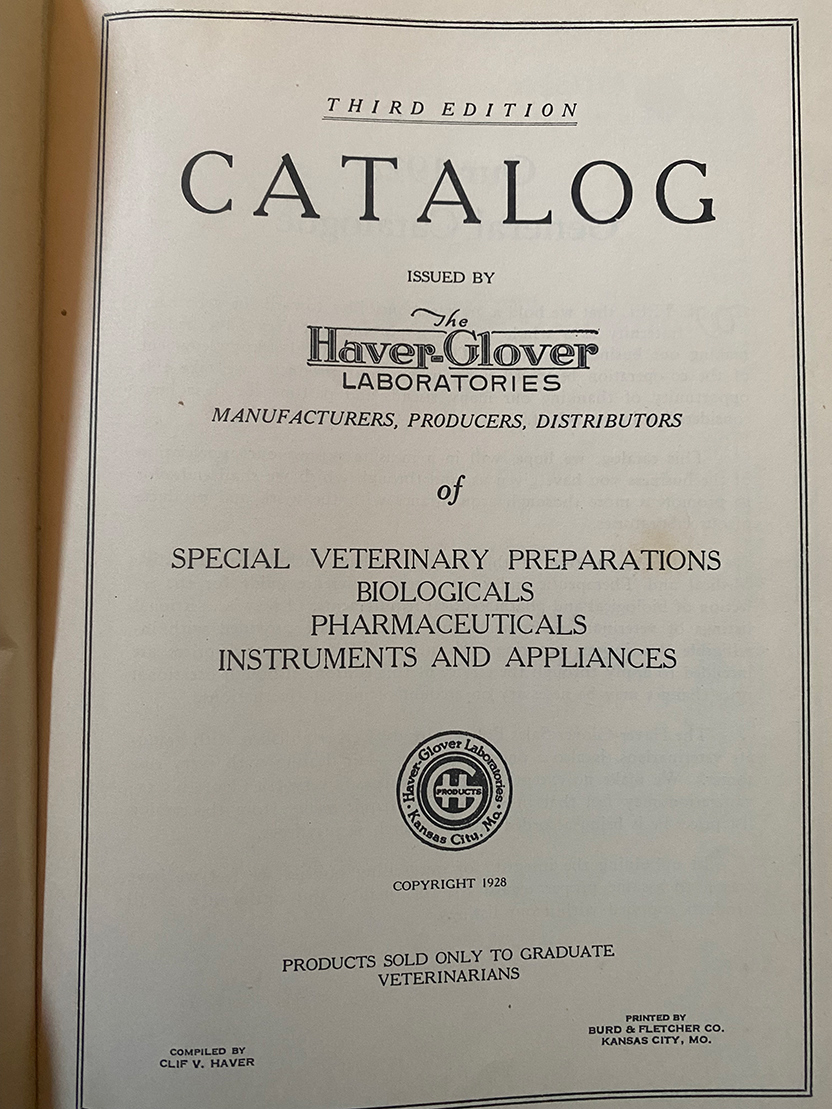
Though not readily available, there is a wealth of scientific knowledge about the use of botanicals in mainstream veterinary medicine in textbooks used before 1940. For more information and to learn more about the historical and current use of botanicals in veterinary medicine, consult the following resources:
- Karreman, Chapter 11, Documented Historical use of Medicinal Plants in Veterinary Medicine, in Treating Cows Naturally, Thoughts and Strategies, Acres USA, Austin, Texas, 2007, p.139-176.
- Veterinary Botanical Medicine Association – to learn more about veterinary botanical medicine and to find a veterinary herbalist in your area.
- Textbook:Veterinary Herbal medicine
For an in-depth look at the properties of botanicals, review Dr. James Duke’s Phytochemical and Ethnobotanical Database (USDA).
Chiropractic
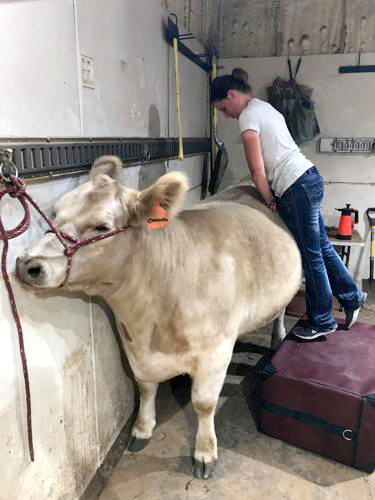
Chiropractic care is a complementary approach to treatment and healing to assist the body in healing itself. Chiropractic modalities have this in common with acupuncture and many other complementary treatments used for centuries. Hippocrates practiced spinal manipulation and is often quoted by chiropractors as saying, “Look well to the spine for causes of disease” (Wardwell 1996). Chiropractic is one of the most commonly used forms of alternative treatment in humans and has gained popularity in animals since the early 20th century (Shoen and Wynn 1998). The focus of chiropractic care is on the relationship of the spinal column to the nervous system and the role of the spinal column in biomechanics and movement. The basis of chiropractic is subluxation which can be described as the decreased motion of the joints by slight changes in the position of the articulating facets that result in abnormal biomechanical and neurological function (Homewood 1979), (A.C.B. 1986). The pathophysiology of subluxations includes compression of spinal nerve roots or the spinal cord, vertebrobasilar arterial insufficiency, somato-visceral dysfunction, and decreased mobility (Shoen 2001). Chiropractic treatments attempt to restore normal position and movement of joints. Veterinary chiropractic research is limited. However, chiropractic care for animals has commonly been used for athletes (horses, dogs) as well as trauma, postoperative complications, excess weight, and conformation issues (all species, including livestock) (Shoen 2001). Equine practitioners are likely to be consulted for chiropractic help in other species, including livestock.

Homeopathy
Homeopathy is a medical system based on the premise that the body can heal itself. Tiny amounts of natural substances, like plants or minerals, stimulate healing. Homeopathy was developed in Germany in the 1700s and is more common in Europe than in the U.S.
The premise behind it is that like cures like. Thus, something that brings on symptoms in its crude form in a healthy animal or person can treat an illness with similar systems when used in very small doses, in which only the essence of the starting material is present. It does this by triggering the body’s natural defenses. This is the same principle behind vaccines and allergy shots; however, homeopathy, if used to prevent a specific morbidity (i.e., Neospora caninum), will not result in quantifiable antibodies, as a vaccine would do. Homeopathic remedies are often used for allergies, migraines, depression, irritable bowel syndrome, rheumatoid arthritis, allergic skin conditions, arthritis, and high blood pressure in humans. The risks are few as the remedies are very diluted (Shoen and Wynn 1998). The starting materials for remedies are herbs, roots, minerals, fungi, and animal products cut, ground, or crushed into small particles and placed in a solvent. (Dettloff and Dettloff 2019).
Husbandry, farm management, and disease prevention
Good husbandry, management, feed hygiene, and disease prevention practices are widely accepted tools for improved animal health. This applies to all species, production systems, and pathogens. A “comprehensive approach that includes alternative products and improved management is likely more effective than relying on a single alternative” (Dahiya et al., 2006, Sternberg et al.,2015). For more information, see our Prevention Chapter. To reiterate, fresh air, species-appropriate diets, clean water, dry bedding, and sunshine may be the best prevention.
Immune modulators
Immune modulators stimulate the immune system and can work against a wide range of pathogens. Immune modulators being studied include cytokines, lipopolysaccharides, short segments of DNA that stimulate innate immune responses (i.e., Unmethylated cytosine–guanine dinucleotide, or CPGs), antibodies derived from egg yolk, and certain plant materials. Cytokines are stable to digestion and absorbable, some are labeled for oral use, and some are given parenterally. Immune modulators are considered promising alternatives for disease prevention and treatment. Immune modulators shown to be safe, effective, and approved for use in cattle include a cytokine-based product for dairy cows to prevent udder infections after calving, and a biologic based on CpGs approved for use in cattle affected by respiratory disease (Bayer 2015). Another approved immune modulator, AmpliMune, raised beta- and gamma-interferon levels within hours and is approved for calves experiencing neonatal diarrhea due to E.coli K99. It can also be used extra-label for immune stimulation of older animals to address high somatic cell count as well as when there is a viral and bacterial disease challenge, i.e., early pneumonia.
Magnetic therapy – Pulsed Electromagnetic Field Therapy (PEMF )
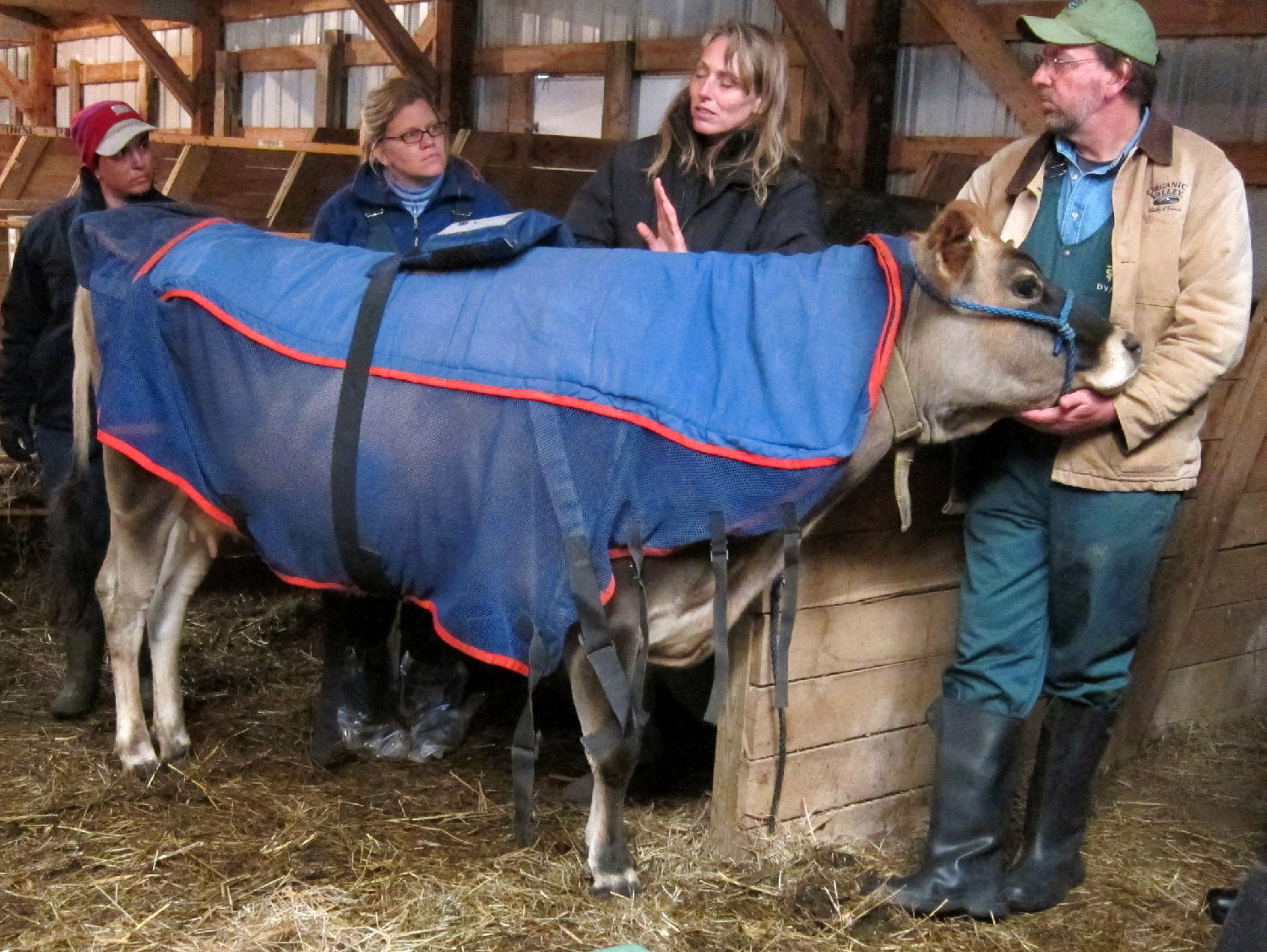
Electromagnetic devices used for therapeutic purposes have existed for over a century. PEMF is electrotherapy that uses an active electromagnetic waveform to treat an area of tissue. Many different types of machines were developed over the years with varying levels of scientific evidence or validation. Research on their use and refinement of devices has grown since the 1980s and continues. The US Food and Drug Administration (FDA) has approved PEMF to treat non-union fractures, postoperative pain and edema, osteoarthritis, and human plantar fasciitis. Its use has been growing in veterinary medicine, where it has been used for bone healing, osteoarthritis, inflammation, pain, edema, and soft tissue wound healing. Animals tolerate non-invasive treatments well, with no evidence of significant side effects. Magnetic devices are available for large animals, including leg wraps, hock wraps, knee and foot wraps, and blankets. Shoen and Wynn 1998, Gaynor 2018).
Organic acids
Organic acids (e.g., citric or acetic acids (vinegar)) are added to feed and water for growth promotion and disease prevention. It is believed that the acid’s ability to kill bacteria may also favor the growth of certain acid-loving good bacteria in the gut and increases the functioning of the gut by increasing acidity level. Cranberry extracts have been used in poultry for quite some time. More data is needed, but studies of organic acids in swine and cattle have shown promise. (Huyghebaert 2011)
Photobiomodulation therapy (PBMT)
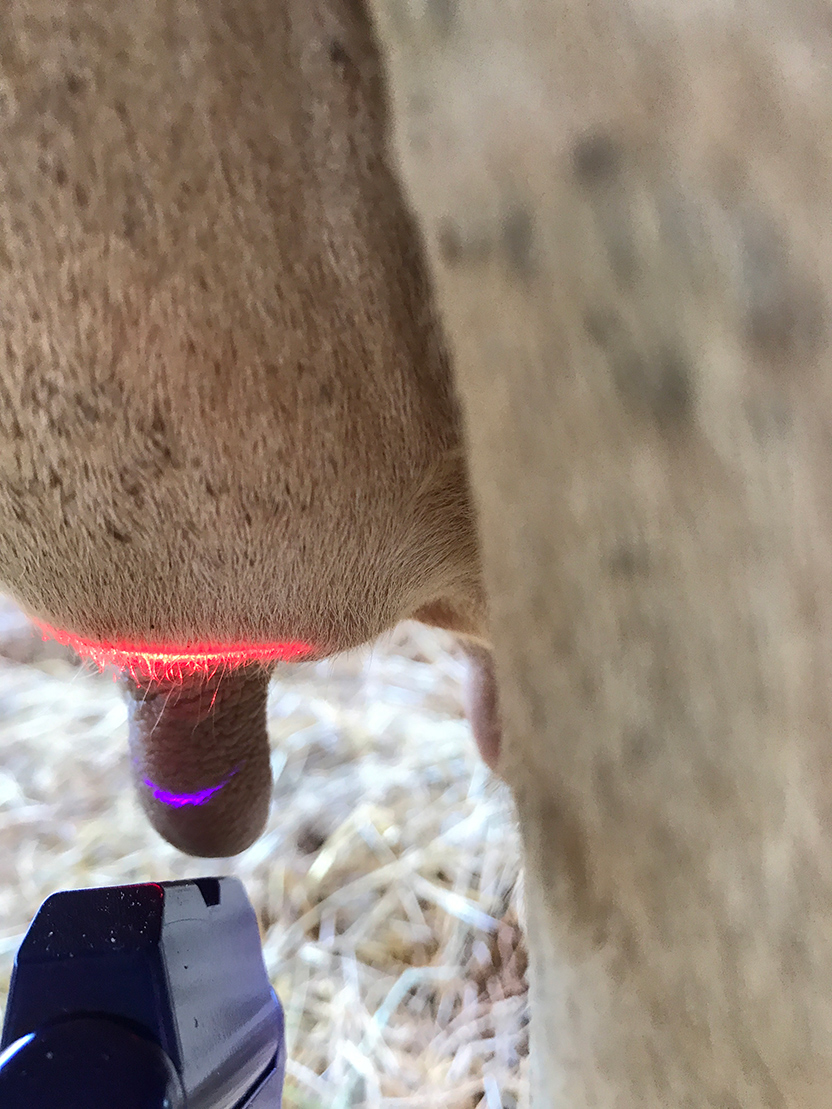
PBMT is the non-thermal interaction of monochromatic radiation with a target site. It uses red/near-infrared light to modulate cellular functions. It upregulates APT, nitric oxide, and reactive oxygen species. It also alters gene transcription and increases cell proliferation, cellular motility, and the production of growth factors. (Anders 2017)
Photobiomodulation is known as laser, cold laser, low-level light therapy (LLLT), and low-intensity laser therapy (LILT). The laser penetrates the skin and deeper tissues. LED therapy is another type of PBMT that works on skin surfaces. PBMT is a non-invasive method to stimulate tissue healing and treat acute and chronic conditions, including pain, inflammation, muscle and tendon injury, and osteoarthritis, with no significant side effects. (Alves 2020)
Laser acupuncture is a method where a laser is used to stimulate acupuncture points. It has been used to treat digestion issues, gastroenteritis, constipation, diarrhea in young animals, conjunctivitis, nerve paralysis, infertility, and mastitis. (Shoen 2001)

Probiotics and prebiotics
The normal microscopic bacteria in the G.I. tract make up the gut microbiome. A healthy microbiome supplies nutrients to the host and aids in digestion. Antibiotic use is not the only thing affecting gut microbes’ health. Illness, injury, and stress can alter the normal bacterial population, pH, and digestive processes, contributing to further ill health and delayed healing.
Probiotics
Probiotics are living microbes (e.g., yeast, fungi, and bacteria) that improve the gut microbiome’s balance when added to the diet. (Pew Chauchyras-Durand 2009) Probiotics are divided into defined (a single strain or mixture of fully described microorganisms) and undefined (mixtures that are not completely described and tend to have better efficacy). Undefined probiotics include “competitive exclusion products,” which are special undefined probiotics that are given shortly after birth or hatching that have shown good efficacy in helping young animals establish beneficial bacteria in the gut before pathogens can colonize (Callaway 2008)) Callaway). Probiotics are used in the US in poultry, pigs, dairy, beef cattle, and companion animals. Storage and administration can be a potential challenge.
Prebiotics
Prebiotics are not living organisms but food for those gut microbes and help them multiply. Prebiotics are organic compounds, such as sugars, that, when added to the diet, are not digestible by the animal but are broken down by beneficial microorganisms in the gut and selectively stimulate their growth and ability to outcompete other harmful microorganisms. Some say that prebiotics positively affect the interior “terrain” of an animal. They also have effects such as modulating the immune system, though how they do this is not completely understood. Prebiotics are used in poultry for growth, disease prevention, and to improve overall gut health. They have been used in pigs, and their use in cattle seems limited to young calves. Prebiotics are quickly digested in the fully formed rumen, making them ineffective.
Trace and macro elements
Calcium, phosphorus, and other macro elements are vital to life. Kelp is high in trace minerals and is a tool for supplying deficient elements (Padgham, 2006).
Vaccines
Vaccines are widely used to prevent disease by some viruses and bacteria. Decreasing viral infections results in fewer secondary bacterial infections requiring antibiotics. At the same time, the cost of vaccines and increased handling/labor/animal handling stress must be weighed for cost-effectiveness. In organic/alternative livestock husbandry, selective use of vaccines is based on a diagnosed need for intervention rather than a blanket vaccine schedule.
Zinc, copper, and other heavy metals
These are naturally occurring and necessary elements that can be added to the diet for growth promotion and treatment. Concerns over potentially harmful residues in meat have to be considered. (USDA 2015)
Other approaches ripe for more research include clay minerals (e.g., bentonites and zeolites) and rare earth elements (e.g., scandium, lanthanum). (Wales 2015), as well as biofilm inhibitors, predatory bacteria, and certain metals such as silver.
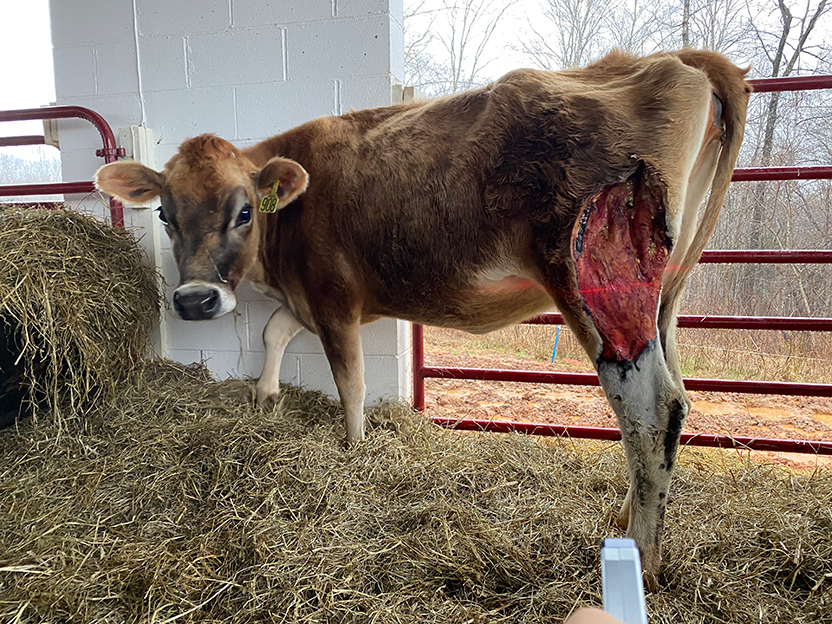 |
Cow “Shelby” showing sloughed muscle group. She survived Blackleg with timely antibiotic and alternative treatments. Source: H Karreman |
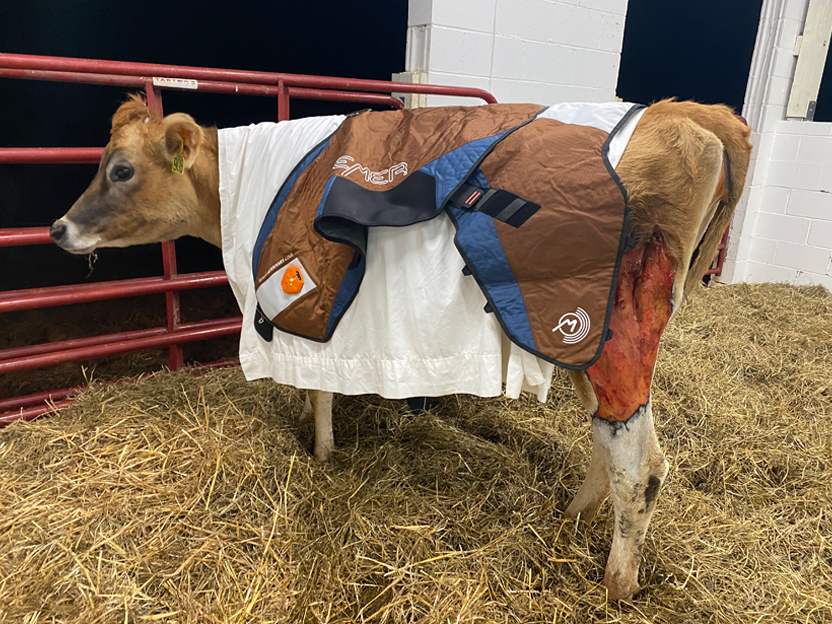 |
Shelby getting PEMF to aid in healing. Source: H. Karreman |
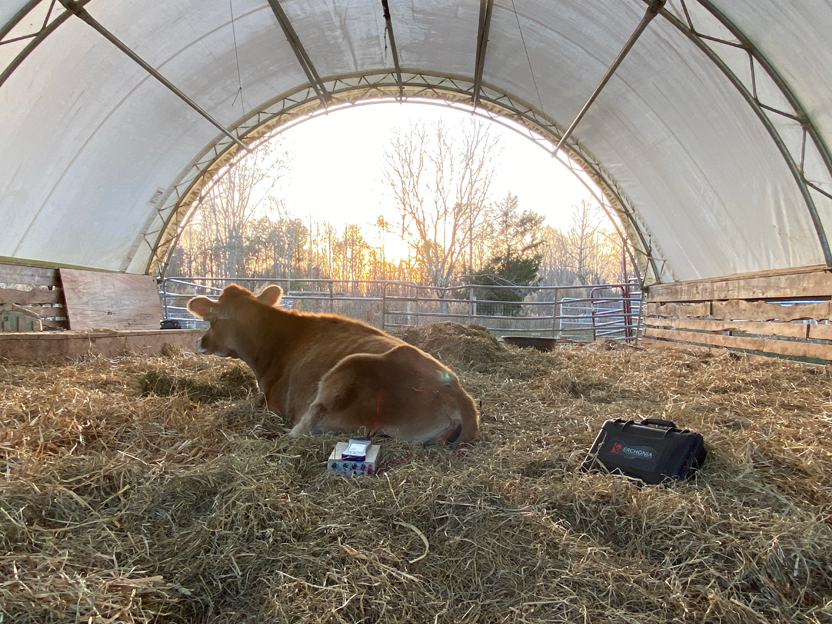 |
Shelby receiving acupuncture with electro-stimulation. Source: H. Karreman |
 |
Shelby as a bred heifer with much receded lesion. Source: H. Karreman |

